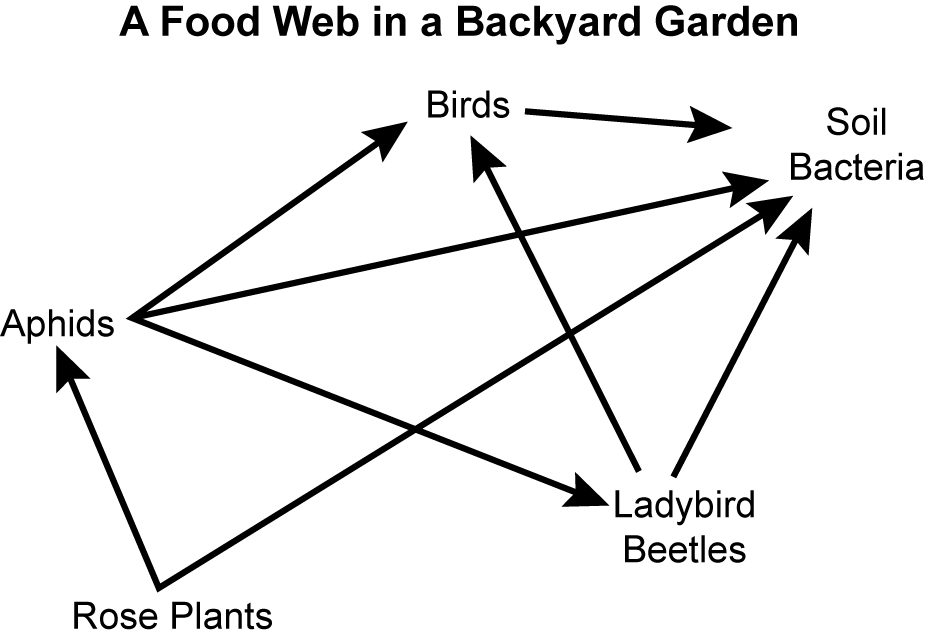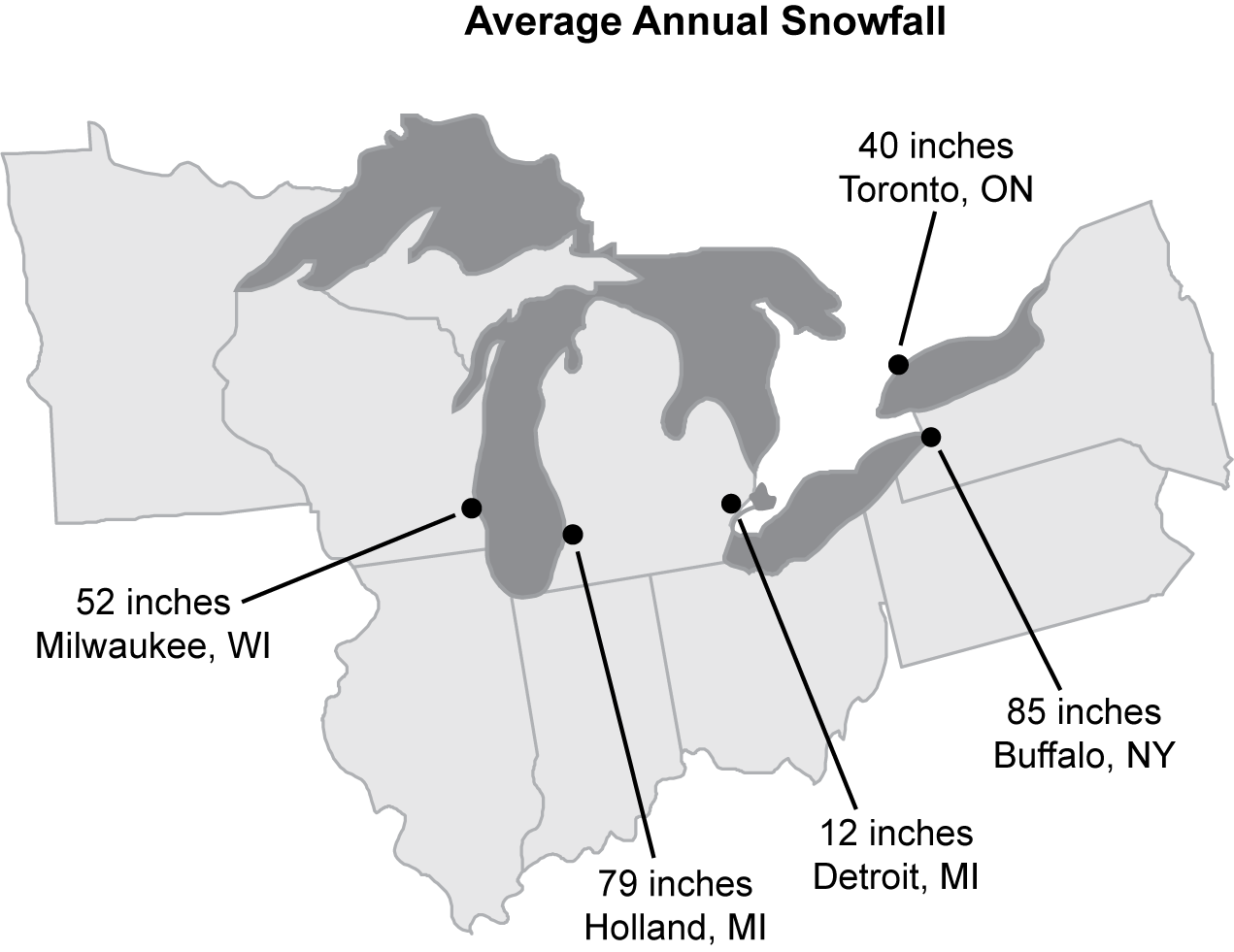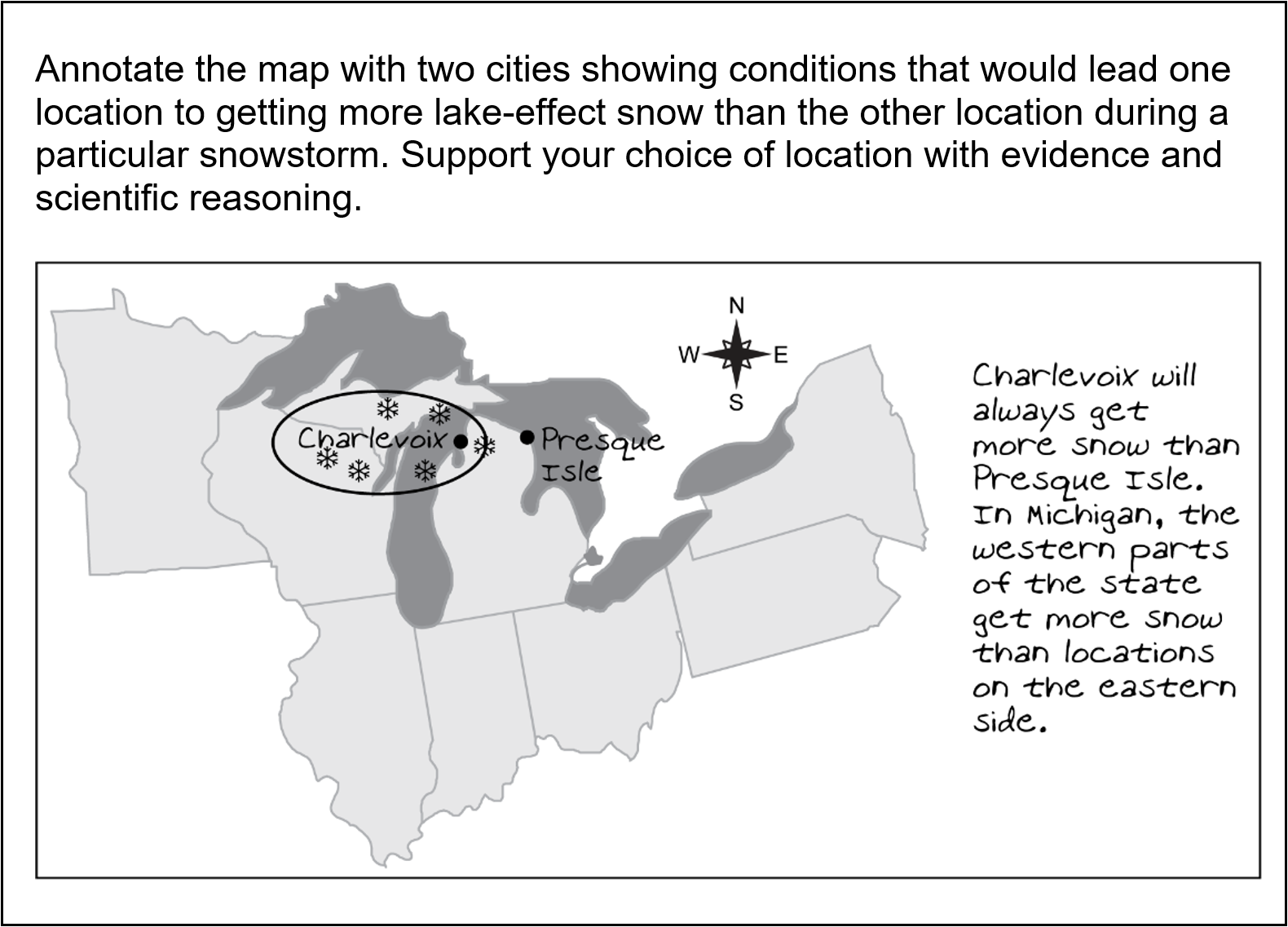Study Guide
Field 137: Science (5–9)
Sample Multiple-Choice Questions
Expand All Answers | Collapse All Answers
The following reference materials will be available to you during the test:
ConstantsPeriodic Table
Subarea 1—Teaching and Learning of Science
Objective 001—Learners and Learning Environments
1. As a part of a unit on energy resources, students in a seventh-grade science class use the engineering design process to build a working scale model of an alternative energy system to decrease fossil fuel dependence. Students use their models to simulate the functions of the energy system and explain both the functions and the system's potential impacts. Which of the following questions should the teacher ask to help students frame their discussions around the alternative energy choice in terms of engineering design?
- "How could you improve your model to function more efficiently?"
- "Is your system a cost-effective solution to the problem of fuel dependency?"
- "What are the possible long-term negative effects of your system on our environment?"
- "How effectively does your system deliver the expected outcome to solve the problem?"
- Answer. Enter to expand or collapse. Answer expanded
- Correct Response: D.
Subarea 2—Professional Knowledge and Skills for Science Teachers
Objective 004—Safety
2. Students in a sixth-grade science class discuss the environmental impacts of different local renewable energy sources. The teacher bases the discussion on the Tippy Dam, located on the Manistee River, which generates power but may reduce the ability of certain fish species, like steelhead trout (Oncorhynchus mykiss), to migrate upstream to reproduce. The teacher plans for students to work in small groups to design a structure to help the fish move upstream. Students have the option to build a scale model of their designs, and several groups ask if it would be possible to bring in small aquarium fish to test out their designs, which causes other groups to voice their concern over the safety of the fish. Which of the following actions should the teacher take in response to the students' request to ensure the humane treatment of living organisms?
- initiating a class discussion on the ethics of using living things, like fish, for testing
- telling the students that they cannot use live animals in the classroom for any reason
- providing students with data on the success rates of a variety of different structure designs
- giving students opportunities to test their designs in the field, rather than bringing the fish into the classroom
- Answer. Enter to expand or collapse. Answer expanded
- Correct Response: A.
Objective 006—Specialized Content Knowledge for All Science Teachers
3. A sixth-grade science teacher begins a lesson sequence on cellular functions during a unit called "Structure, Function, and Information Processing." While planning, the teacher considers including the story of Henrietta Lacks, an African American female cancer patient whose cells were harvested without her consent, in the lesson sequence. Henrietta Lacks's cells became the first immortalized human cell line, which allowed for the development of cancer research. The teacher can best support student sense-making around the nature of science by using this case study in which of the following ways?
- to demonstrate the interdependence of science on the fields of technology and engineering
- to facilitate a class discussion on the role of peer review in the advancement of scientific knowledge
- to give a real-world example of how the structure and function of cells can help in solving technological problems
- to provide opportunities for all students to understand the role of ethics in the development of scientific knowledge
- Answer. Enter to expand or collapse. Answer expanded
- Correct Response: D.
Subarea 3—Life Science Content Knowledge
Objective 007—Life Science for Middle Grades
4. Students in a fifth-grade science class investigate the sources of energy in their food as a part of their unit on matter and energy in organisms and ecosystems. Students use information on teacher-provided cards to create a garden food web that includes soil bacteria, rose plants, aphids, birds, and ladybird beetles. One student's diagram is shown.

A diagram labeled “A Food Web in a Backyard Garden” is shown. Arrows point from a node labeled aphids point toward nodes labeled birds, soil bacteria, and ladybird beetles. Arrows point from a node labeled birds to a node labeled soil bacteria. A node is labeled soil bacteria. Arrows point from a node labeled ladybird beetles to nodes labeled birds and soil bacteria. Arrows point from a node labeled rose plants to nodes labeled aphids and soil bacteria.
To complete the model of how energy flows through the ecosystem, the student should include which of the following additions to their diagram?
- pictures of all the organisms
- the number of each type of species in the ecosystem
- an arrow pointing from the soil bacteria to the aphids
- text indicating the sun with an arrow connecting it to the rose plants
- Answer. Enter to expand or collapse. Answer expanded
- Correct Response: D.
Subarea 4—Physical Science Content Knowledge
Objective 008—Chemistry and Physics for Middle Grades
5. Students in an eighth-grade science class conduct a group investigation that will anchor lesson sequences in several units, including "Matter and its Interactions," "From Molecules to Organisms," "Ecosystems," and "Earth and Human Activities." At the beginning of the year, students prepare compost piles containing common organic and inorganic waste material. Over three months, students examine the compost every two weeks and document the decomposition process. When several students observe that the compost pile is much warmer than the surrounding environment, the teacher asks the class to brainstorm about what might cause the temperature difference. Which of the following student responses demonstrates the most scientifically accurate sense-making around the processes producing the observed heat?
- "The moisture in the compost is evaporating and moving the heat energy into the atmosphere."
- "The energy of the sun is warming the top of the pile, and that heat transfers down into the compost."
- "The microbes in the compost are breaking down the waste and producing heat through their metabolism."
- "The pressure increases at the bottom, causing it to warm, and the heat rises to the top of the compost pile."
- Answer. Enter to expand or collapse. Answer expanded
- Correct Response: C.
Subarea 5—Earth and Space Science Content Knowledge
Objective 009—Earth and Space Science for Middle Grades
6. During a unit on human impacts, eighth-grade science students conduct cost-benefit analyses for various types of renewable energy resources. As part of this activity, the teacher provides students with a case study of a fictional town in Michigan that would like to produce its electricity purely through a single source of power. Which of the following student criticisms is most scientifically accurate in Michigan?
- Solar panels do not produce as well in winter as they do in summer.
- Hydropower cannot be produced from the Great Lakes because the tides are too strong.
- Wind turbines are not able to spin fast enough to catch the strong wind off the Great Lakes.
- Geothermal power is not consistently produced in the region because there is not an active volcano.
- Answer. Enter to expand or collapse. Answer expanded
- Correct Response: A.
Multiple Subareas
Use the information to answer the three questions that follow.
During a unit on Earth's systems, students in a seventh-grade science class engage in a lesson sequence on interactions between the atmosphere and the hydrosphere. The teacher anchors the sequence around regional average snowfalls and historic lake-effect snowstorms along the Great Lakes, including the 1999 New Year's snowstorm that left South Haven, Michigan, buried under 28 inches of snow. Following the introduction of the anchoring phenomenon, students work in pairs to develop and record their initial thoughts using the map shown.

A map titled, “Average Annual Snowfall” of the Great Lakes region is shown. On the west shore of Lake Michigan, Milwaukee, Wisconsin is labeled 52 inches. On the east shore of Lake Michigan, Holland, Michigan is labeled 79 inches. On the east side of Michigan and the west shore of Lake Saint Clair, Detroit, Michigan is labeled 12 inches. On the east shore of Lake Erie, Buffalo, New York is labeled 85 inches. On the north shore of Lake Ontario, Toronto, Ontario is labeled 40 inches.
Later in the unit, students will analyze weather maps from snowstorms that resulted in significant lake-effect snow to answer more specific questions about this phenomenon.
Objective 002—Content Pedagogy
7. The teacher can best help students use skills acquired in other disciplines to visualize the differences in snowfall across Michigan's Great Lakes region by including which of the following investigations in the lesson sequence?
- plotting cities and their snowfall totals on a map using Global Positioning System (GPS) coordinates
- calculating the snow water equivalent (SWE) that falls on the entire state each winter
- writing a personal story about their experiences with winter during this school year
- reading historical descriptions of major snow events from cities across the state
- Answer. Enter to expand or collapse. Answer expanded
- Correct Response: A.
Objective 003—Impact on Learning
8. Students analyze weather maps from several snowstorms that resulted in significant lake-effect snowfall in the region. After completing this analysis, the class updates their driving question board to include "How does the distance that an air mass travels over open water influence how much snow will fall?" To give students an opportunity to show their individual sense-making of the topic, the teacher checks their understanding with an entrance ticket that mirrors the introductory phenomenon. The ticket and a student response are shown.

An assignment is shown with the prompt, "Annotate the map with two cities showing conditions that would lead one location to getting more lake-effect snow than the other location during a particular snowstorm. Support your choice of location with evidence and scientific reasoning." Under the prompt, a map of the Great Lakes region is shown including a compass rose. On the map, the city of Charlevoix is located on the northeastern shore of Lake Michigan and the city of Presque Isle is located directly east of Charlevoix on the western shore of Lake Huron. Charlevoix is circled and snowflakes are drawn within the circle. To the right of the map, a student response is included and states, "Charlevoix will always get more snow than Presque Isle. In Michigan, the western parts of the state get more snow than locations on the eastern side."
Which of the following questions should the teacher provide as written feedback to this student to support their sense-making around the phenomenon?
- How does wind direction affect the amount of snow?
- What piece of evidence do you have to support your claim?
- What did we just learn about that can help you answer the question?
- When does the western part of the state get less snow than the east?
- Answer. Enter to expand or collapse. Answer expanded
- Correct Response: A.
Objective 005—Professional Knowledge and Skills
9. In a formative assessment in the middle of the lesson sequence, students are asked to describe why some areas consistently receive more lake-effect snow than others. The teacher notices that nearly one third of their students mistakenly identify proximity to the Great Lakes as the most important factor affecting the amount of lake-effect snow an area receives. The teacher understands that the primary factor in the amount of lake-effect snowfall is the distance of water that the westerly winds blow over. Which of the following instructional adjustments would best guide students toward this understanding?
- adding reading material to the unit on the cold deserts of the north and south poles
- bringing students back to the anchoring image to examine trends in snow by location
- adjusting the anchoring image so that the example cities are in the north rather than in the south
- extending the investigation by discussing specific heat and the amount of water in the Great Lakes
- Answer. Enter to expand or collapse. Answer expanded
- Correct Response: B.